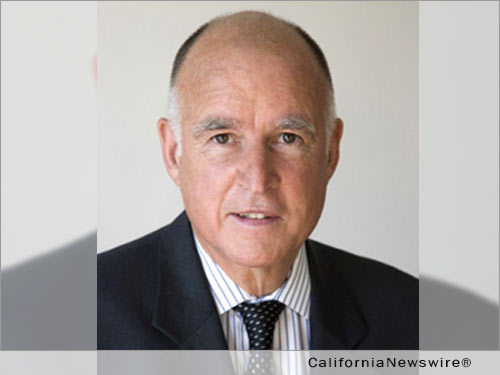SACRAMENTO, Calif. /California Newswire/ — With the announcement that the United States will begin to dismantle the Clean Power Plan, California Governor Edmund G. Brown Jr. and New York Governor Andrew M. Cuomo today issued the following statement reaffirming their ongoing commitment to exceed the targets of the Clean Power Plan and curb carbon pollution:

“Dismantling the Clean Power Plan and other critical climate programs is profoundly misguided and shockingly ignores basic science. With this move, the Administration will endanger public health, our environment and our economic prosperity.
“Climate change is real and will not be wished away by rhetoric or denial. We stand together with a majority of the American people in supporting bold actions to protect our communities from the dire consequences of climate change.
“Together, California and New York represent approximately 60 million people – nearly one-in-five Americans – and 20 percent of the nation’s gross domestic product. With or without Washington, we will work with our partners throughout the world to aggressively fight climate change and protect our future.”
California and New York lead the nation in ground-breaking policies to combat climate change. Both states – which account for roughly 10 percent of greenhouse gas emissions in the United States – have adopted advanced energy efficiency and renewable energy programs to meet and exceed the requirements of the Clean Power Plan and have set some of the most aggressive greenhouse gas emission reduction targets in North America – 40 percent below 1990 levels by 2030 and 80 percent below 1990 levels by 2050. California and New York will continue to work closely together – and with other states – to help fill the void left by the federal government.
California’s Climate Leadership
– Greenhouse Gas Emission Reductions: Established ambitious greenhouse gas emission reduction targets to reduce emissions 40 percent below 1990 levels by 2030 and 80 percent by 2050. These targets have made California a leader across the country in fighting climate change.
– Cap-and-Trade: Established the most comprehensive carbon market in North America, investing more than $2.6 billion from the cap-and-trade program in programs and projects that reduce emissions and support communities disadvantaged by pollution.
– Renewable Energy: Established landmark targets that require at least 33 percent of California’s electricity comes from renewable energy sources by 2020, and 50 percent by 2030.
– Energy Efficiency: Established targets that double the rate of energy efficiency savings in California buildings and require residential buildings to be zero net energy by 2020, and all commercial buildings to be zero net energy by 2030.
– Super Pollutant Reduction: Established the nation’s toughest restrictions on destructive super pollutants, such as methane, black carbon, and hydrofluorocarbon gases.
– Low Carbon Fuel Standard: Established requirements for producers of petroleum-based fuels to reduce the carbon intensity of their products, helping drive the replacement of fossil fuels with renewable natural gas and diesel, low-carbon ethanol, and clean electricity, giving consumers more clean fuel choices while driving significant clean fuel investment and creating new economic opportunities.
– Zero Emission Vehicles: Established a program requiring increased sales of zero emission vehicles – a policy adopted by 10 states – resulting in more than 30 new models of clean and affordable vehicles that are reducing consumer gasoline and diesel costs. California also adopted North America’s first greenhouse gas emission car standards – later adopted as a national program – and adopted the nation’s first heavy-duty vehicle and trailer greenhouse gas emission reduction requirements, which led to similar national requirements.
New York’s Climate Leadership
– Greenhouse Gas Emission Reductions: Established ambitious greenhouse gas emission reduction targets to reduce emissions 40 percent below 1990 levels by 2030 and 80 percent by 2050. These targets have made New York a leader across the country in fighting climate change.
– Regional Greenhouse Gas Initiative (RGGI): Spearheaded the formation of the successful RGGI cap-and-trade program between northeast and mid-Atlantic states, led effort to reduce RGGI’s carbon emission cap by 45 percent in 2014, and recently called for an additional cap reduction of at least 30 percent between 2020 and 2030.
– Reforming the Energy Vision: Established a comprehensive energy strategy to make the vision for a clean, resilient, and affordable energy system a reality, while actively spurring energy innovation, attracting new jobs, and improving consumer choice.
– Clean Energy Standard: Established the most comprehensive and ambitious clean energy mandate in the state’s history, requiring that 50 percent of electricity in New York come from renewable energy sources like wind and solar by 2030.
– Clean Energy Fund: Established a $5 billion fund that is jump-starting clean-tech innovation, mobilizing private investment, capitalizing the nation’s largest Green Bank, and helping eliminate market barriers to make clean energy scalable and affordable for all New Yorkers.
– Coal-Free New York: Committed to close or repower all coal-burning power plants in New York to cleaner fuel sources by 2020.
– Offshore Wind: Approved the nation’s largest wind energy project off the Long Island coast in 2017 and made an unprecedented commitment to develop up to 2.4 gigawatts of offshore wind power by 2030.
These efforts complement California and New York’s ongoing efforts to broaden collaboration among subnational leaders on climate change, including through the Under2 Coalition – a pact among cities, states and countries around the world to limit the increase in global average temperature to below 2 degrees Celsius in order to avoid potentially catastrophic consequences. California and New York are among the Under2 Coalition’s 167 jurisdictions representing more than one billion people and $25.9 trillion in combined GDP – more than one-third of the global economy.















